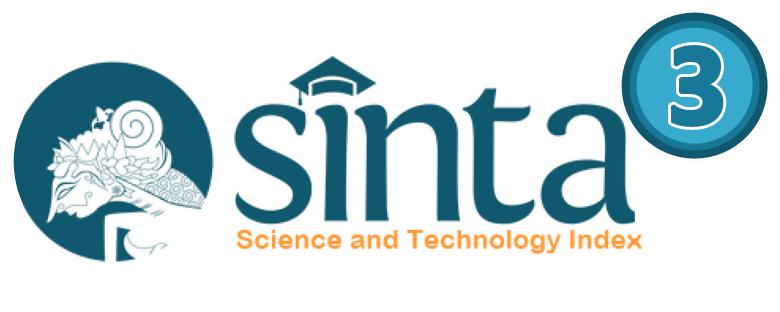PENGARUH FAKTOR EKONOMI, SOSIAL EKONOMI DAN IKLIM TERHADAP BENCANA ALAM DI INDONESIA
Abstract
This purpose of the research are to the analyse the Economic Growth, Education Participation Rate, Urban Population, Population Density, Number of Rainfall in terms of Damage Natural Disasters in Indonesia. This type of research is associative descriptive research. This study is based on data 2015 obtained from institutions and related institution. Methods that being used are Ordinary Least Square (OLS). The estimation results show that Economic Growth has a significant negative effect the Damage Natural Disasters in Indonesia, Education Participation Rate has a not significant effect the Damage Natural Disasters in Indonesia, Urban Population has a significant positive effect the Damage Natural Disasters in Indonesia, Population Density has a not significant effect the Damage Natural Disasters in Indonesia, Number of rainfall has a not significant effect the Damage Natural Disasters in Indonesia.
Keywords: Economic Growth, Education Participation Rate, Urban Population, Population Density, Number of Rainfall
Full Text:
PDFReferences
Amri, M.R., Gita Yulianti, Ridwan Yunus, Sesa Wiguna, A.W. Adi, A.N. Ichwana, R. E. Randongkir, and R.T. Septian. 2006. “Risiko Bencana Indonesia.” 218 pp.
Azhar, Zul. 2018. Kajian Lingkungan dan Mitigasi Penanggulangan Pra-Bencana di wilayah rawan Longsor dan Kekeringan. http://doi.org/1031227/osf.io/ur2fy
Azhar, Zul. 2018. Kajian Lingkungan dan Perencanaan Pembangunan. http://osf.io/qgexk
Badan Pusat Statistik. 2016. Sumatera Barat Dalam Angka. Sumatera Barat
Hoffmann, R., & Muttarak, R. (2017). Learn from the Past, Prepare for the Future: Impacts of Education and Experience on Disaster Preparedness in the Philippines and Thailand. World Development.
Johansson, M. (2015). Data sources on small-scale disaster losses and response - A Swedish case study of extreme rainfalls 2000-2012. International Journal of Disaster Risk Reduction, 12, 93–101.
Lilik, K., Yunus, R., Muhammd, robi amir, & Narwawi, P. (2011). Indek Ks Rawa an Benc Cana in Ndones, 1–226.
Schumacher, I., & Strobl, E. (2011). Economic development and losses due to natural disasters: The role of hazard exposure. Ecological Economics, 72, 97–105. https://doi.org/10.1016/j.ecolecon.2011.09.002
S. Mulyadi. 2012. Ekonomi Sumber Daya Manusia dalam Perspektif Pembangunan. Jakarta: Raja Grafindo Persada
Suparmoko. 2000. Ekonomika Lingkungan. Yogyakarta: BPFE.
Suparmoko dan Ratnaningsih . 2011. Ekonomika Lingkungan. Yogyakarta: BPFE.
Shabnam, N. (2014). Natural Disasters and Economic Growth: A Review. International Journal of Disaster Risk Science, 5(2), 157–163. https://doi.org/10.1007/s13753-014-0022-5
Sofya, R., Siwi, M. K., & Oknaryana, O. (2018). Kondisi Sosial Ekonomi Siswa Putus Sekolah. Jurnal Inovasi Pendidikan Ekonomi (JIPE), 8(2), 90-94.
Songwathana, K. (2018). The Relationship between Natural Disaster and Economic Development: A Panel Data Analysis. Procedia Engineering, 212(2017), 1068–1074. https://doi.org/10.1016/j.proeng.2018.01.138
Todaro, P Michael dan Smith, C Stephen. 2006. Pembangunan Ekonomi. Edisi Kesembilan. Jakarta:Erlangga
Toya, Hideki & Skidmor, Mark (2007). Economic development and the impacts of natural disasters. Ecomics Letter 94 (2007) 20-25.
Yakin, Addinul. 2015. Ekonomi Sumber Daya Alam dan Lingkungan. Jakarta: Akademika Pressindo
DOI: http://dx.doi.org/10.24036/jmpe.v1i3.5023


